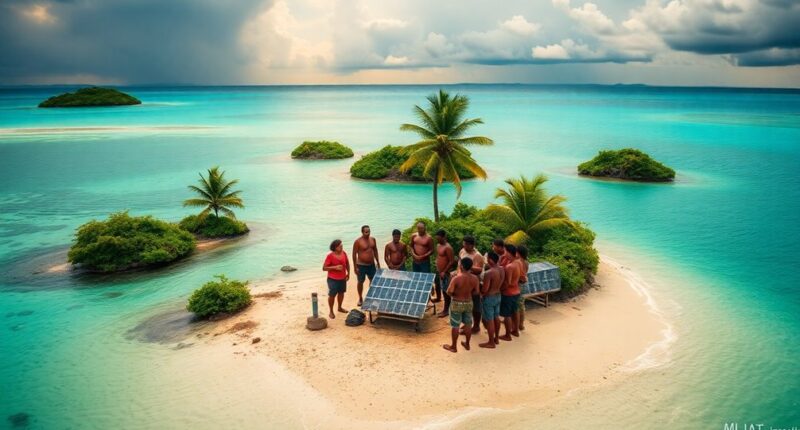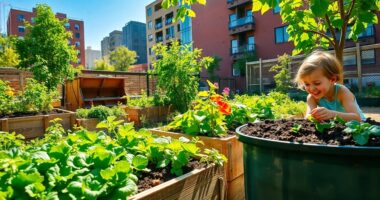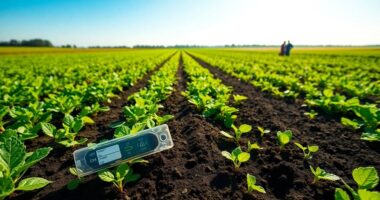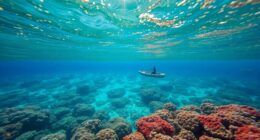The Pacific Islands face serious water security challenges due to climate change. Rising sea levels contaminate freshwater sources, and only 44% of rural areas have access to safe drinking water. Innovative solutions, like rainwater harvesting and community-based management, are essential to tackle this crisis. Collaboration among governments, NGOs, and locals can enhance water access and resilience. Discover how these initiatives could transform water security for vulnerable communities in the region.
Key Takeaways
- Climate change exacerbates water security issues in Pacific Islands, affecting freshwater supplies and increasing saltwater intrusion.
- Only 44% of rural areas have access to clean drinking water, highlighting the urgent need for innovative solutions.
- The Pacific Community (SPC) promotes water resource management and implements initiatives to enhance access to safe drinking water.
- Community-based solutions like rainwater harvesting and local governance are essential for improving water safety and resilience.
- Regional collaboration among governments, NGOs, and communities is vital to secure clean water access and drive impactful change.
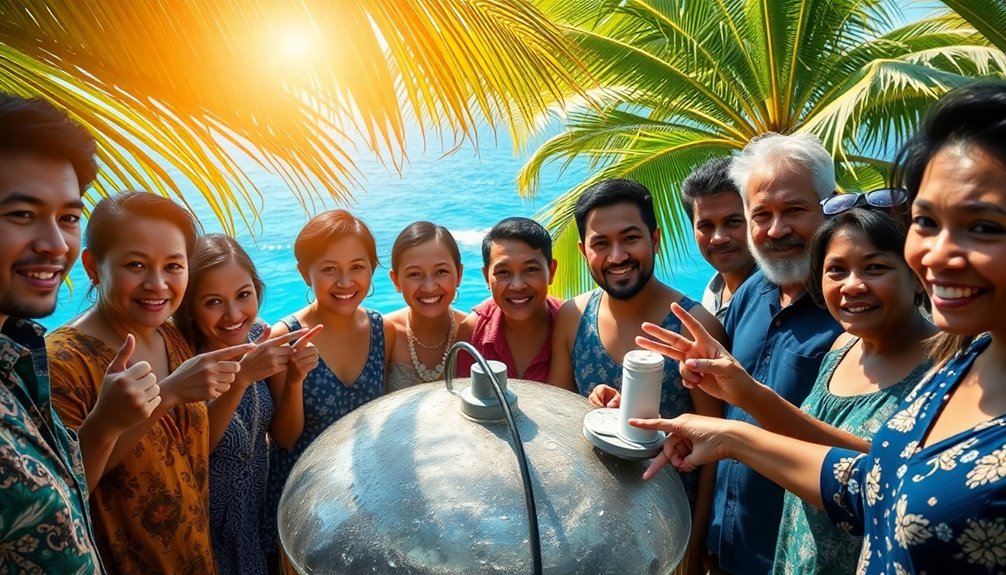
As climate change threatens the fragile ecosystems of the Pacific Islands, securing access to clean water has never been more critical. You mightn't realize that these islands struggle with some of the lowest rates of access to safely managed drinking water globally. Many rural communities depend on limited groundwater lenses, streams, or rainwater harvesting, leaving them vulnerable as climate change disrupts rainfall patterns, causing both droughts and flooding.
With only 44% of rural areas having access to clean drinking water compared to 92% in cities, the need for innovative solutions is urgent. The rising sea levels, projected to increase 10-30% more than the global average by 2100, threaten freshwater supplies through saltwater intrusion. As pollution from improper waste disposal and agricultural runoff contaminates water sources, the situation becomes even more dire.
The Pacific Community (SPC) plays a vital role in managing water resources, implementing projects like the Water Scarcity initiative that enhances access to drinking water and builds community capacity to protect these resources. You'll find that innovative strategies, such as improvements in water catchment and storage facilities, are already making a difference in places like Tuvalu. Water Safety Planning has been localized for rural communities in the Pacific Islands to better address their unique challenges.
Rainwater harvesting systems have become crucial for communities lacking alternative sources, while integrating gender equality, disability, and social inclusion in water management fosters a more equitable approach. Local governance systems and community cohesion are essential for successfully implementing Water Safety Planning (WSP), which helps ensure safe drinking water.
Regional collaboration is key, as partnerships between the SPC, governments, NGOs, and development partners target water security as a cornerstone of resilience. With a commitment to innovative community-based water management solutions, the Pacific Islands can tackle the challenges posed by climate change. Your awareness and involvement can help push for the change needed to secure clean water access for everyone in this vulnerable region.
Frequently Asked Questions
What Are the Main Causes of Water Scarcity in Pacific Islands?
Water scarcity in Pacific islands primarily stems from rising sea levels, which contaminate freshwater sources with saltwater.
Extreme weather events disrupt rainfall patterns, while prolonged droughts and higher temperatures increase evaporation, further depleting resources.
Geographical constraints limit groundwater supplies, especially in atoll islands, and aging infrastructure complicates management.
Combined with socioeconomic challenges, these factors create a precarious situation for water security, making reliable access to safe drinking water increasingly difficult for communities.
How Does Climate Change Impact Water Resources in These Regions?
Climate change significantly impacts water resources in your region by causing rising sea levels that contaminate freshwater sources with saltwater.
You'll notice temperature increases altering rainfall patterns, leading to unreliable water availability.
Extreme weather events, like intense cyclones and droughts, further strain these resources.
As a result, you may face challenges in accessing clean drinking water, affecting both your health and agricultural productivity.
Adapting to these changes is crucial for securing your water future.
What Technologies Are Being Considered for Water Conservation?
You might find it interesting that as you sip your drink, countless technologies are being considered for water conservation.
MadiDrop and LifeStraw help purify small amounts of water, while Aqus Filters tackle larger daily needs.
Desalination through solar distillation shows promise, too.
Atmospheric harvesting, like Zero Mass Water, could transform air into liquid.
Meanwhile, community projects improve infrastructure, ensuring everyone has access to clean water.
The future of water conservation is truly innovative and crucial.
How Can Local Communities Participate in Water Management Solutions?
You can participate in water management solutions by joining local water committees or engaging in community meetings.
Collaborating with your neighbors, you'll help develop culturally appropriate plans that address specific needs. Utilizing traditional knowledge alongside modern practices enhances resilience.
Advocate for the inclusion of marginalized voices, and support initiatives focused on rainwater harvesting.
What Role Do International Organizations Play in Supporting Water Security?
International organizations play a crucial role in supporting water security by providing funding, expertise, and collaborative frameworks.
They help you access resources for developing effective water management strategies and technologies. By fostering partnerships, these organizations facilitate knowledge sharing and capacity building within communities.
They also advocate for policies that ensure safe water access, integrating elements like gender equality and social inclusion, which ultimately strengthens your ability to tackle water security challenges effectively.
Conclusion
In the Pacific Islands, where over 70% of freshwater comes from rainfall, water security is a pressing challenge. Innovative solutions are crucial to address the growing demand and climate impacts. By harnessing technology and community engagement, you can help ensure sustainable water access for generations to come. With a commitment to collaboration and creativity, the islands can transform their water future, proving that even small changes can lead to significant improvements in water security.
